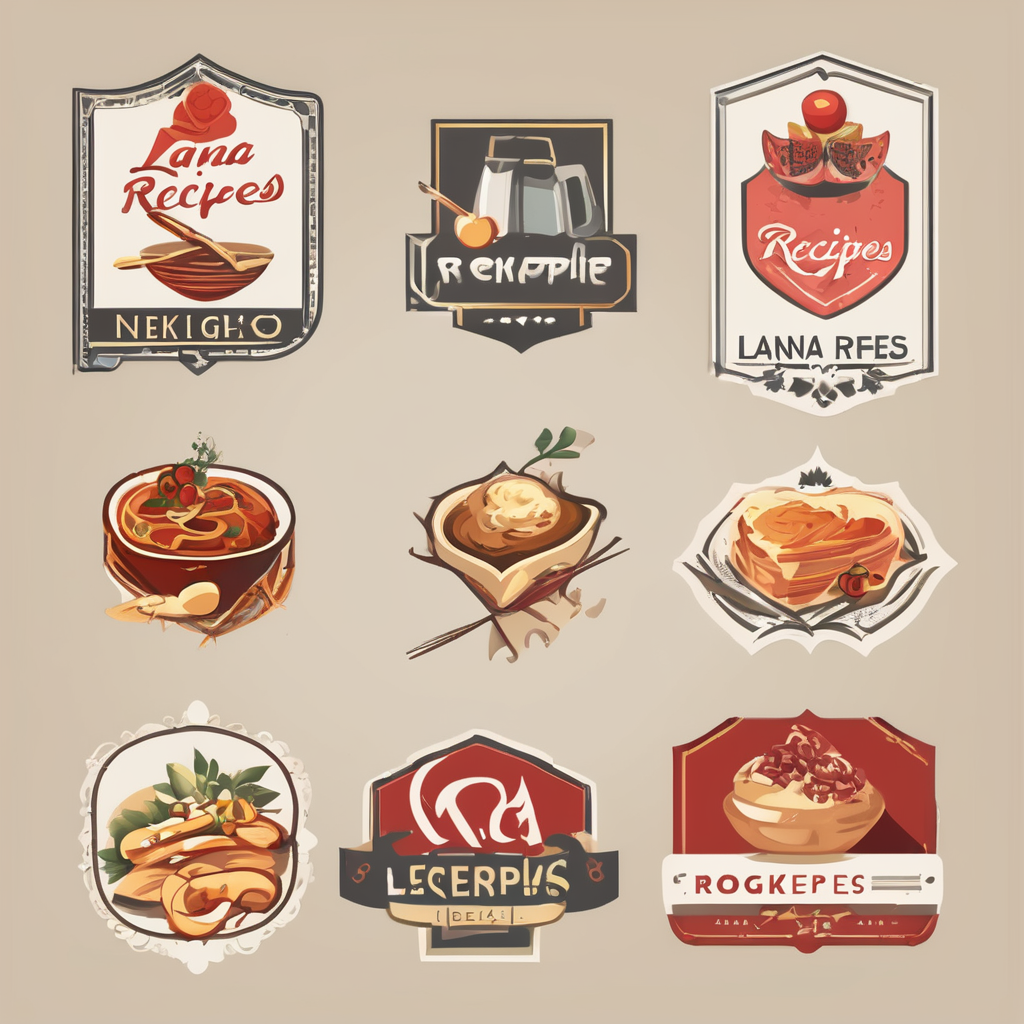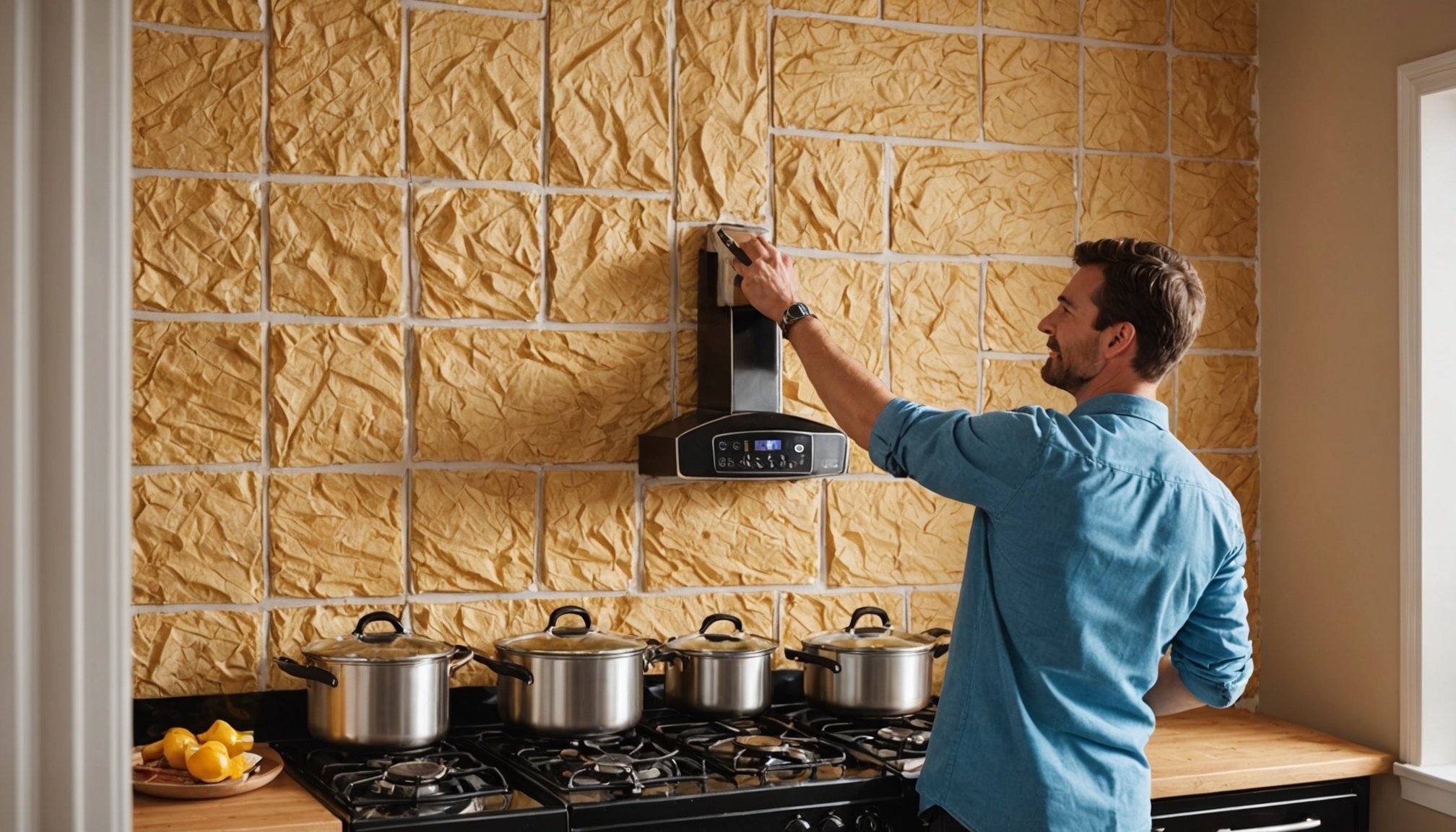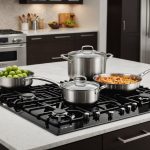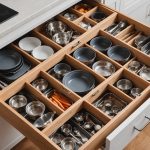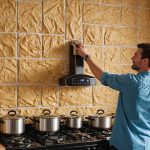Types of Insulation Materials for Kitchen Walls
Choosing the right insulation materials for kitchen walls is crucial for sustaining a comfortable and energy-efficient kitchen. There are several kitchen wall insulation options to consider, each with its distinct benefits and drawbacks.
Fiberglass
Fiberglass is a common choice due to its affordability and thermal insulation properties. It’s non-flammable, making it a safe option for kitchens. However, its moisture resistance is limited, which could lead to potential mould issues.
In parallel : How can meal prepping enhance my weight loss journey in a UK kitchen?
Foam Board
Foam board offers excellent thermal insulation and moisture resistance. It is lightweight and easy to install, making it suitable for DIY projects. Nevertheless, it’s more expensive than fiberglass and requires precise cutting and fitting.
Spray Foam
Spray foam provides outstanding thermal insulation by sealing gaps and cracks efficiently. It’s versatile and can adapt to various kitchen layouts, offering superior moisture resistance. However, it requires professional installation due to its complexity and higher cost.
Also to see : Discover Your Healthiest Self: Transform Your Fridge with a Smart Nutrient Tracker
Considerations
When selecting insulation materials, consider the kitchen’s exposure to moisture and the safety of materials used. Ensuring proper moisture resistance will prevent damage, while safety considerations protect against fire hazards. This selection process will help in shaping a more efficient and safe kitchen environment.
Installation Methods for Kitchen Wall Insulation
Choosing between DIY insulation and professional insulation services is crucial for successfully insulating kitchen walls. For the adventurous homeowners keen on a hands-on approach, some insulation techniques can be tackled without external help.
DIY Insulation Techniques
First, gather necessary materials like measuring tape, a cutter, adhesive, and the selected insulation material. Follow the steps:
- Measure the wall area to ensure you purchase the correct amount of insulation material.
- Cut the insulation to fit your kitchen wall precisely.
- Apply adhesive to both the wall and the insulation material.
- Carefully fit the insulation to the wall, ensuring it’s snug and secure.
Proper sealing and finishing are imperative to prevent energy loss and moisture accumulation.
Seeking Professional Help
Consider professional services for more complex projects, like spray foam insulation, which demands precision. Professionals ensure accurate application and improved sealing. The extra investment can lead to long-term energy savings.
Whether you decide to DIY or hire professionals, the success of your kitchen insulation project relies on thorough planning and execution. Quality sealing and finishing will enhance the material’s performance, assure safety, and improve overall thermal insulation efficiency.
Benefits of Kitchen Wall Insulation
Installing kitchen wall insulation can significantly enhance energy efficiency, which can lead to noticeable reductions in energy consumption. By acting as a barrier to heat flow, it maintains a more stable indoor temperature, lessening the burden on heating and cooling systems. This not only reduces energy bills but also fosters a more comfortable environment.
Comfort Enhancement
Proper insulation directly affects the comfort level in your kitchen. It minimizes drafts and cold spots, creating a consistently pleasant atmosphere regardless of the season. Insulation also provides soundproofing benefits, reducing external noise intrusion and ensuring a peaceful cooking experience.
Impact on Cooking Speed and Appliances
Effective insulation optimizes appliance performance by maintaining a stable kitchen temperature. When the room’s temperature is stable, ovens and refrigerators work more efficiently, which may improve cooking speeds. A consistently maintained environment can result in quicker heating and reduced energy use by these appliances, leading to both convenience and savings.
Long-term Improvements
The benefits of kitchen wall insulation extend beyond immediate comfort and cost savings. Over time, a well-insulated kitchen contributes to the longevity of both the building’s structure and its appliances. As insulation prevents moisture accumulation, it reduces the risk of mould growth, thereby preserving the kitchen’s integrity and ensuring a healthier living space.
Cost Analysis of Kitchen Wall Insulation
Investing in kitchen wall insulation entails evaluating the cost of insulation materials and labour, alongside potential savings. Understanding these factors can lead you to make financially sound decisions and ensure you get the best return on investment (ROI).
Material and Labour Costs
Insulation materials like fiberglass and foam board typically have lower upfront costs compared to spray foam. However, spray foam, despite being pricier, often offers superior thermal insulation results and might lower energy bills more effectively in the long run. Labour costs depend on whether you choose a DIY approach or hire professionals. DIY methods can save money on labour but might compromise efficacy if not executed correctly.
Evaluating Costs vs. Benefits
When evaluating expenses, consider the short-term and long-term benefits. Spray foam may have higher installation costs, but its effective moisture resistance and heat retention can lead to significant energy savings over time. Budgeting for installation should account for both initial outlay and estimated savings on utility bills post-insulation.
Potential Savings and ROI
Over time, proper kitchen wall insulation decreases heating and cooling demands, leading to cost reductions. Calculate potential savings by comparing energy bills before and after installation to grasp the insulation’s financial impact.
Tips for Maximizing Insulation Effectiveness
Ensuring insulation materials work to their full potential involves strategic efforts to optimize your kitchen insulation. Here are some essential insulation tips to enhance performance.
Firstly, focus on sealing gaps to prevent air leakage. Small gaps can lead to substantial thermal insulation loss, undermining the insulation’s efficiency. Use caulk or weather-stripping to seal any visible openings around windows, doors, and fixtures. Complete coverage is crucial; ensure all sections of the wall are insulated without missing spots.
To gauge effectiveness over time, periodically assess your kitchen’s insulation performance. If you notice a change in energy efficiency or comfort, inspect for any damage or degradation in the insulation. This proactive approach can help maintain optimal conditions and extend your insulation’s lifespan.
Additionally, the kitchen’s design can significantly impact insulation efficacy. Utilise design elements like splashbacks and cabinetry smartly; they can act as additional barriers, augmenting the insulation. Combining correct installation techniques with these insulation tips ensures your kitchen remains energy-efficient and comfortable.
Regular evaluation, expert installation, and strategic design integration will bolster your kitchen’s insulation, saving you money and enhancing comfort.
Common Questions and Concerns
When it comes to kitchen wall insulation, some prevalent misconceptions may hinder informed decisions. One frequent notion is that thicker insulation materials are always better, which is not necessarily true. Insulation effectiveness depends on the material’s thermal insulation properties rather than just its thickness. Another misunderstanding is that insulation solves all moisture issues. While materials like spray foam offer moisture resistance, ensuring proper ventilation in the kitchen is equally crucial to prevent mould growth.
Concerns about insulation materials often revolve around safety and potential health risks. Products like fiberglass may cause irritation during installation. Thus, wearing protective gear is recommended to mitigate such risks.
Troubleshooting inadequate insulation can be daunting. A common issue is the presence of cold spots, often resulting from incomplete coverage or gaps in the installation. To address this, identify areas where heat loss is likely and reinforce with additional insulation or sealing.
For more nuanced guidance on kitchen insulation concerns, or to engage in community discussions, local hardware stores and online forums can be valuable resources. These platforms often provide expert advice and practical tips, aiding in overall insulation project success.
